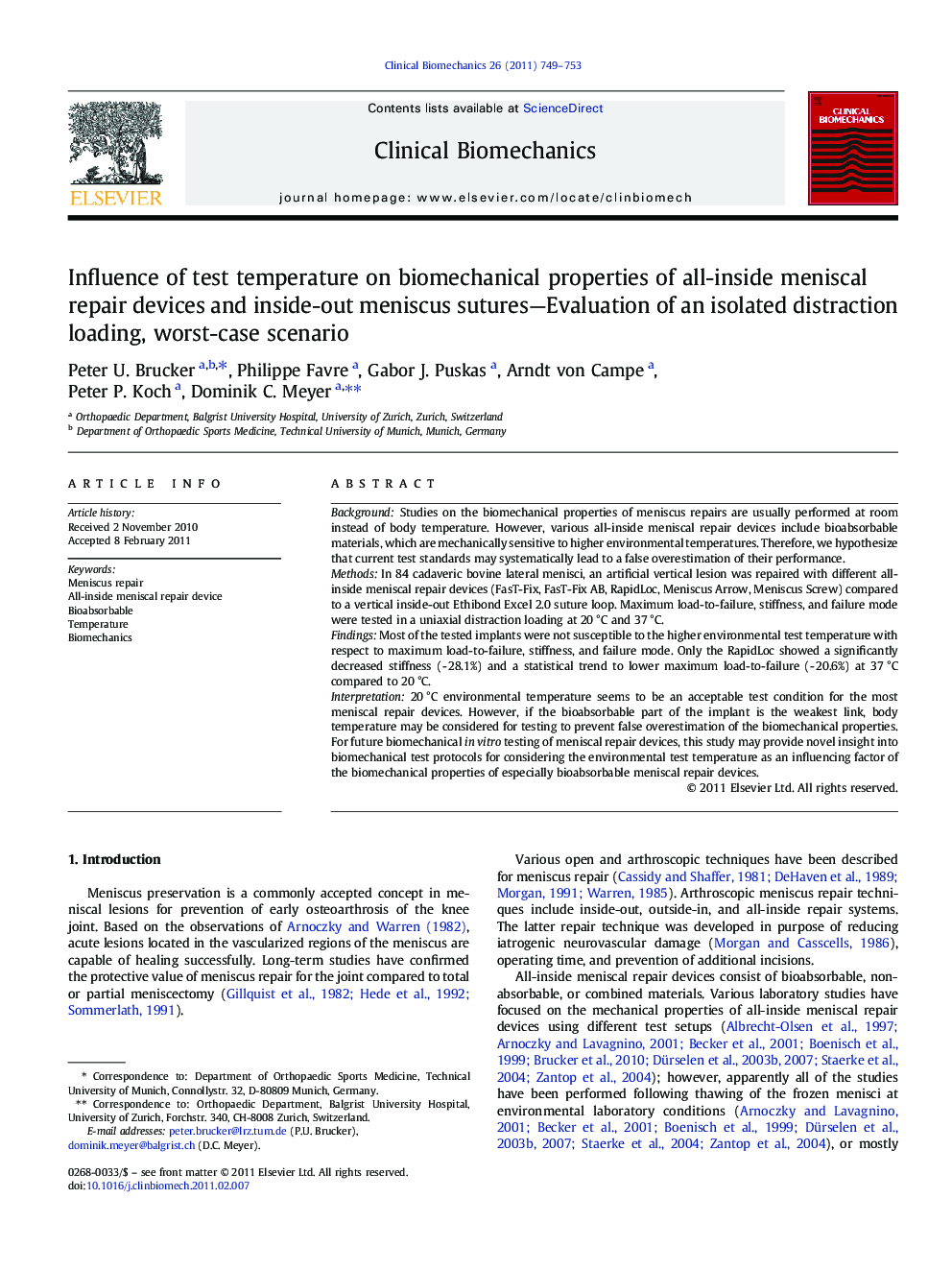| Article ID | Journal | Published Year | Pages | File Type |
|---|---|---|---|---|
| 4050723 | Clinical Biomechanics | 2011 | 5 Pages |
BackgroundStudies on the biomechanical properties of meniscus repairs are usually performed at room instead of body temperature. However, various all-inside meniscal repair devices include bioabsorbable materials, which are mechanically sensitive to higher environmental temperatures. Therefore, we hypothesize that current test standards may systematically lead to a false overestimation of their performance.MethodsIn 84 cadaveric bovine lateral menisci, an artificial vertical lesion was repaired with different all-inside meniscal repair devices (FasT-Fix, FasT-Fix AB, RapidLoc, Meniscus Arrow, Meniscus Screw) compared to a vertical inside-out Ethibond Excel 2.0 suture loop. Maximum load-to-failure, stiffness, and failure mode were tested in a uniaxial distraction loading at 20 °C and 37 °C.FindingsMost of the tested implants were not susceptible to the higher environmental test temperature with respect to maximum load-to-failure, stiffness, and failure mode. Only the RapidLoc showed a significantly decreased stiffness (- 28.1%) and a statistical trend to lower maximum load-to-failure (- 20.6%) at 37 °C compared to 20 °C.Interpretation20 °C environmental temperature seems to be an acceptable test condition for the most meniscal repair devices. However, if the bioabsorbable part of the implant is the weakest link, body temperature may be considered for testing to prevent false overestimation of the biomechanical properties. For future biomechanical in vitro testing of meniscal repair devices, this study may provide novel insight into biomechanical test protocols for considering the environmental test temperature as an influencing factor of the biomechanical properties of especially bioabsorbable meniscal repair devices.
